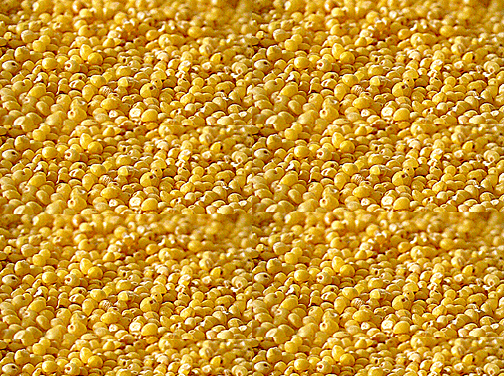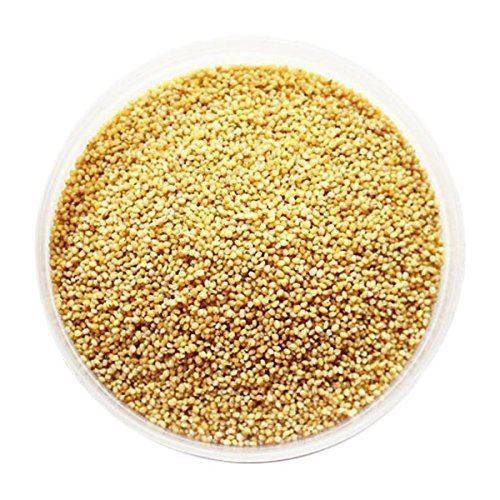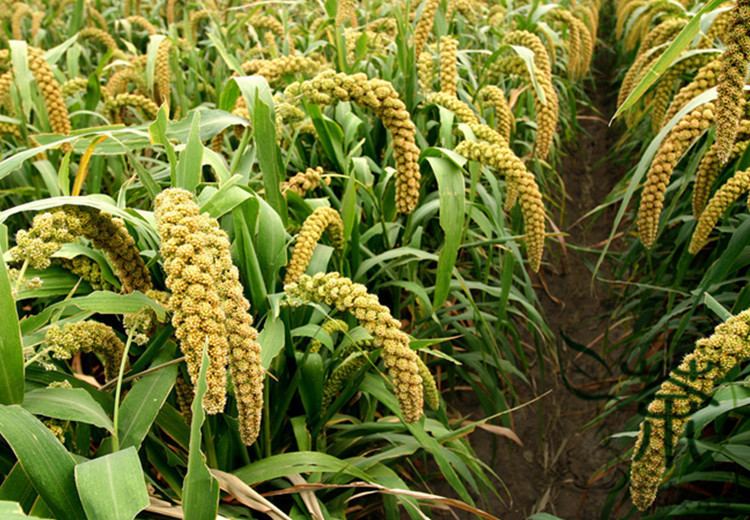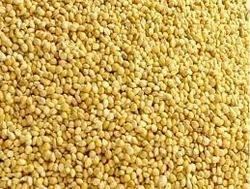Higher classification Setaria | Scientific name Setaria italica Rank Species | |
 | ||
Similar Millet, Proso millet, Congee, Broom‑corn, Adlay | ||
Foxtail millet (Chinese: 小米; botanic name Setaria italica, synonym Panicum italicum L.) is an annual grass grown for human food. It is the second-most widely planted species of millet, and the most important in East Asia. It has the longest history of cultivation among the millets, having been grown in India since antiquity. According to recent research, it was first domesticated in China around 6,000 BC. Other names for the species include dwarf setaria, foxtail bristle-grass, giant setaria, green foxtail, Italian millet, German millet, and Hungarian millet.
Contents

Description

Foxtail millet is an annual grass with slim, vertical, leafy stems which can reach a height of 120–200 cm (3.9–6.6 ft).
The seedhead is a dense, hairy panicle 5–30 cm (2.0–11.8 in) long.

The small seeds, around 2 mm (less than 1/8 in.) in diameter, are encased in a thin, papery hull which is easily removed in threshing. Seed color varies greatly between varieties.
Names
Names for foxtail millet in other languages spoken in the countries where it is cultivated include:

Cultivation

In South India, it has been a staple diet among people for a long time from the sangam period. It is popularly quoted in the old Tamil texts and is commonly associated with Lord Muruga and his consort Valli.
In China, foxtail millet is the most common millet and one of the main food crops, especially among the poor in the dry northern part of that country. In Southeast Asia, foxtail millet is commonly cultivated in its dry, upland regions. In Europe and North America it is planted at a moderate scale for hay and silage, and to a more limited extent for birdseed.
It is a warm season crop, typically planted in late spring. Harvest for hay or silage can be made in 65–70 days (typical yield is 15,000-20,000 kg/ha of green matter or 3,000-4,000 kg/ha of hay), and for grain in 75–90 days (typical yield is 800–900 kg/ha of grain). Its early maturity and efficient use of available water make it suitable for raising in dry areas.
Diseases of foxtail millet include leaf and head blast disease caused by Magnaporthe grisea, smut disease caused by Ustilago crameri, and green ear caused by Sclerospora graminicola. The unharvested crop is also susceptible to attack by birds and rodents.
History and domestication
The wild antecedent of foxtail millet has been securely identified as Setaria viridis, which is interfertile with foxtail millet; wild or weedy forms of foxtail millet also exist. Zohary and Hopf note that the primary difference between the wild and cultivated forms is "their seed dispersal biology. Wild and weedy forms shatter their seed while the cultivars retain them." The earliest evidence of the cultivation of this grain comes from the Peiligang culture of China, which also cultivated Panicum miliaceum, but foxtail millet became the predominant grain only with the Yangshao culture.
More recently, the Cishan culture of China has been identified as the earliest to domesticate foxtail millet around 6500–5500 BC.
The earliest evidence for foxtail millet cultivation outside of its native distribution is at Chengtoushan in the Middle Yangtze River, dating to around 4000 BC. In Southern China, foxtail millet reached the Chengdu Plain (Baodun) at around 2700 BC and Guangxi (Gantuoyan, near the Vietnamese border) at around 3000 BC. Foxtail millet also reached Taiwan (Nankuanli, Dapenkeng culture) at around 2800 BC and the Tibetan Plateau (Karuo) at around 3000 BC.
Foxtail millet likely reached Southeast Asia via multiple routes. The earliest evidence for foxtail millet in Southeast Asia comes from various sites in the Khao Wong Prachan Valley in central Thailand, with the site at Non Pa Wai providing the earliest date with direct AMS dating to around 2300 BC.
Foxtail millet arrived in Europe later; carbonized seeds first appear in the second millennium BC in central Europe. The earliest definite evidence for its cultivation in the Near East is at the Iron Age levels at Tille Hoyuk in Turkey, with an uncorrected radiocarbon date of about 600 BC.
